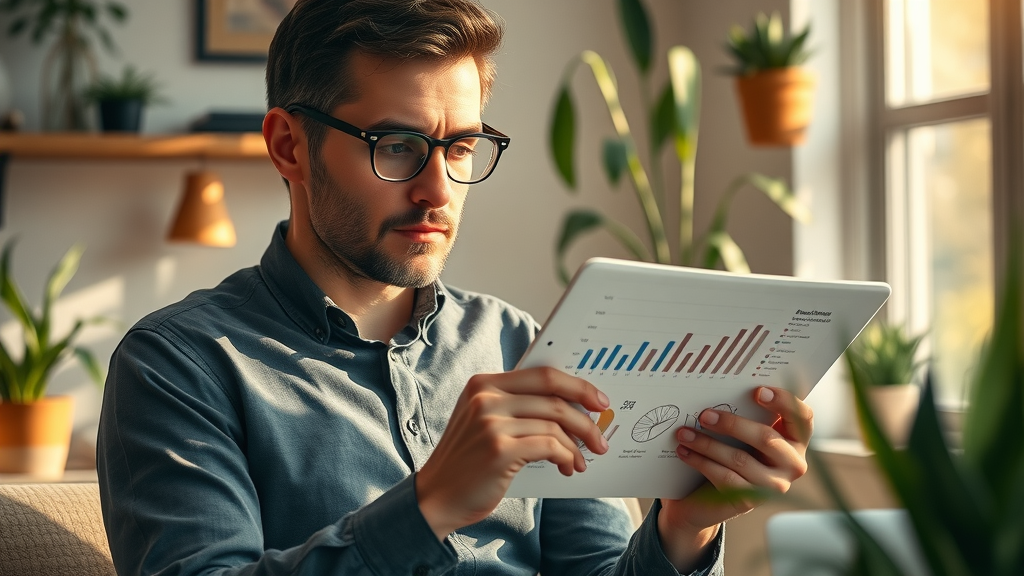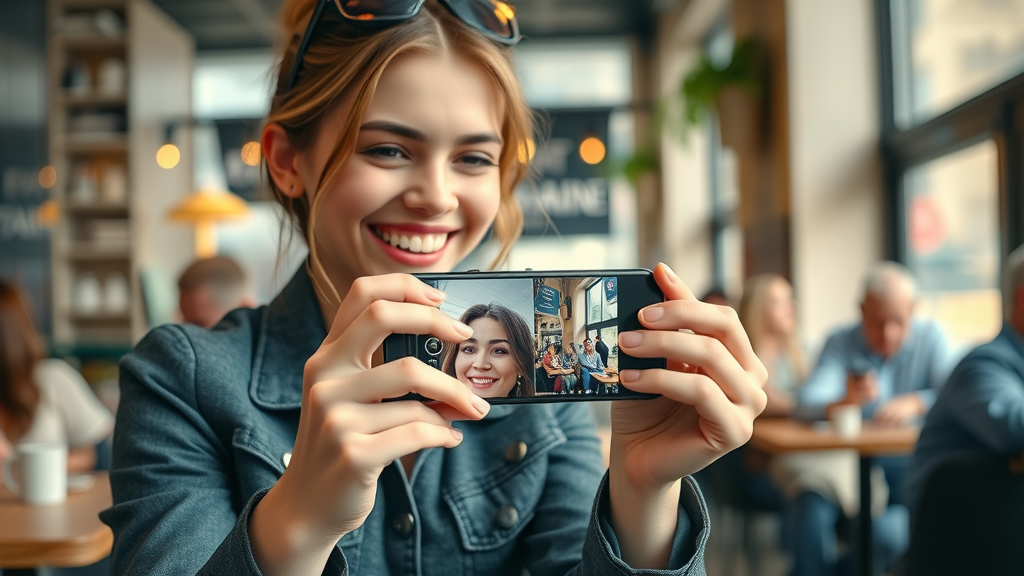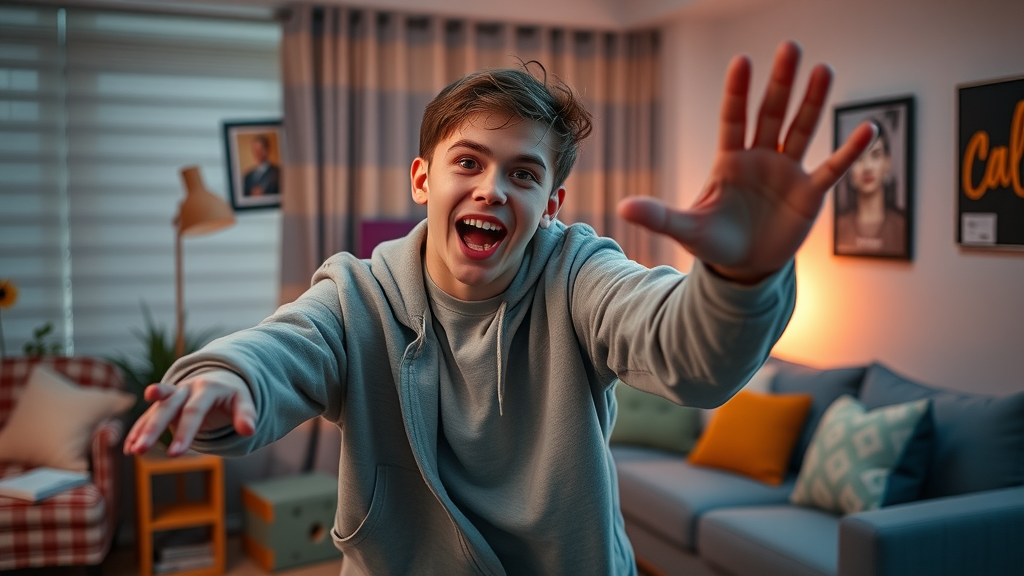Did you know that posts shared during peak hours can double your engagement compared to those published at random times? In a world where algorithms and attention spans rule, posting at the right moment on each social media platform can be your secret to standing out. This guide dives deep into the best times to post on social media , revealing strategies, trends, and actionable steps you need to elevate your digital presence—whether you’re managing business pages, an influencer brand, or simply seeking more likes and shares.
What you’ll learn: You’ll discover how timing dramatically affects your reach, learn to tailor your schedule by platform, explore industry differences, and master tools and analytics for ongoing success.
Why Knowing the Best Times to Post on Social Media Matters
Understanding the best times to post on social media is crucial for anyone looking to maximize the impact of their digital efforts. If you publish content when your audience is most active, you significantly boost your potential reach and engagement. In contrast, posting when your audience is offline often results in wasted resources and less interaction. This is because social networks prioritize content based on timeliness and user engagement—a factor influenced heavily by when you share your message.
Different social media platforms have unique algorithms, and each boasts its own peak periods when users are most inclined to interact with posts. For instance, the optimal time for an Instagram post may not align with Facebook or LinkedIn’s prime hours. Recognizing these platform-specific patterns lets you tailor your posting strategy, ensuring your content surfaces at the exact moment your target audience is attentive and ready to engage.

"A study reveals that posts made during optimal windows achieve up to 2x the engagement compared to off-peak hours."
- Understanding the best times to post on social media increases reach and engagement.
- Posting at strategic times tailors content to audience habits.
- Different platforms have unique optimal posting hours.
How to Identify the Best Times to Post on Social Media
To find your optimal posting times , start by analyzing when your followers are most active across each social media platform . Study analytics—available on most networks like Instagram Insights and Facebook Page Analytics—to uncover moments of high user activity. Observe past content performance. Look for patterns in days of the week, hours of engagement, or spikes in likes, comments, and shares. Let these insights shape your editorial calendar.
Listening to your target audience also matters. Review user demographics, locations, and typical time zones to better target your post on social . For example, if most of your followers are based in the Eastern time zone, schedule content accordingly to catch them during break times or after work. These strategies ensure your social media posts don’t get lost in crowded feeds.
Analyzing Social Media Audiences and Their Online Behavior
Delving into audience analytics helps you understand which posting times resonate best with your followers. Use platform-native dashboards to evaluate metrics such as when your audience is most frequently online or which content types drive the most interaction. Details like the best day to post , average engagement time , and audience age or location can shape a schedule that’s far more effective than guesswork.
Many businesses leverage this data to spot their optimal time for engagement. For B2C brands, evenings and weekends may prove the most fruitful. B2B accounts might find morning hours more successful, especially on networks like LinkedIn. Frequent reviews—at least monthly—ensure you capture evolving trends in user behavior, keeping your competitive edge sharp.

Factors That Influence the Best Times to Post on Social Media
Multiple factors affect the ideal posting time for your content. Consider the type of content : video posts often outperform during after-school hours or evenings, while business updates might excel in morning or lunch breaks. Audience demographics, such as age groups and work schedules, play a major role. Time of year is another dimension— seasonal trends and holidays can dramatically shift when users are active.
Don’t overlook the influence of trending topics. The latest viral event or news cycle can cause surges in traffic at unexpected hours, making flexibility vital. Regular A/B testing—trying similar content at different times—helps fine-tune the exact windows in which your media post captures the most attention and sharing potential.
The Role of Time Zones and Global Social Media Audiences
As you scale to reach a broader or international fanbase, time zones become an essential consideration in your social media strategy. Posting at 9am local time in New York won’t serve your audience in London or Sydney. Tools like Buffer and Hootsuite now let you tailor schedules to the right time zone , ensuring your post appears at the perfect moment for every segment of your audience.
Global brands often create multiple content variations, each scheduled to hit peak hours in various regions. Evaluate your analytics by city or country and deploy posts accordingly. This localization ensures no section of your audience is left behind, especially on platforms like Twitter or LinkedIn, where business audiences may span several continents.
General Overview: Best Universal Times to Post on Social Media
While precise times may vary by audience and industry, research offers a solid starting point for most media platforms . The table below summarizes industry-standard findings for the best times to post on social media by network. Use this as a guideline, then customize based on your analytics for maximum impact.
| Platform | Best Days | Best Times |
|---|---|---|
| Wednesday, Friday | 11am - 2pm | |
| Tuesday, Thursday | 9am - 12pm | |
| Tuesday - Thursday | 8am - 11am | |
| Twitter/X | Wednesday, Friday | 9am - 12pm |
| TikTok | Tuesday, Thursday | 6pm - 10pm |
| Saturday | 8pm - 11pm |

Best Times to Post on Social Media Platforms (Facebook, Instagram, Twitter, LinkedIn, TikTok, Pinterest)
Each social media platform boasts its own user behavior patterns, meaning the best time to post on Instagram may differ completely from that of TikTok or LinkedIn. Here’s a platform-by-platform breakdown for mastering the timing of your content for outstanding results.
Best Time to Post on Instagram
Success on Instagram relies on timing as much as content. Studies show that 11am to 2pm on Wednesdays and Fridays are the most rewarding windows for engagement, with users typically scrolling during lunch breaks or “micro-breaks” at work or school. High-visual posts and short stories perform best during weekday mid-mornings and early afternoons when user activity surges.
To further boost visibility, consider the type of content . Videos and Reels often attract more attention during evenings or after dinner hours, while static photo posts and carousels shine during the late mornings. Keeping a close watch on daily Instagram Insights—the available analytics tool—can refine your approach, revealing when your own followers are most active.

Best Time to Post on Facebook
Facebook’s audience spans generations and time zones, but most engagement occurs Tuesday and Thursday between 9am and 12pm . Morning posts thrive as people check updates before work and during their first break. The optimal posting time is generally before lunchtime, but not too early—avoid posting pre-8am.
Facebook’s algorithm favors fresh posts and prioritizes timely content—event reminders, live community updates, or breaking news. For local businesses, matching your post on social to regional business hours can yield even stronger results. Frequent A/B testing remains crucial due to Facebook's ever-evolving approach to news feed curation.
Best Time to Post on Twitter/X
Twitter’s conversational, real-time nature means the best times to post often cluster around mid-morning to lunch on Wednesdays and Fridays (9am to 12pm). Users tend to check trending topics before and during their work hours or as they plan their day. For news-driven brands, try to post as stories develop, optimizing for timely discussions and hashtags.
Leverage Twitter’s analytic tools to pinpoint additional surges, especially if you notice audience spikes during special events or global conversations. Don’t be afraid to experiment with late afternoon strategies for markets in other time zones due to the platform’s global reach.
Best Time to Post on LinkedIn
As a professional network, LinkedIn’s engagement peaks Tuesday through Thursday, 8am to 11am , matching the start of the workday for most business users. Posts about industry insights, thought leadership, and professional achievements perform best during these early morning slots.
Avoid weekends and late evenings, when business professionals are less likely to interact with work-related content. Tailor your schedule based on your specific industry or region—some markets might have slightly different office hours, especially for international firms.
Best Time to Post on TikTok
TikTok is fueled by evening engagement, with Tuesday and Thursday between 6pm and 10pm as the optimal time to post . User activity spikes as teens and young adults relax after school or work, making it ideal for fun, viral-ready content. Trends develop fast, so staying on top of analytics is essential to catch new patterns.
Experiment with short-form, eye-catching video content during these windows. TikTok’s algorithm rewards posts that drive quick engagement, so timing can mean the difference between obscurity and millions of views.

Best Time to Post on Pinterest
Pinterest’s unique ecosystem is most active Saturday evenings, 8pm to 11pm . Users often browse inspirational content and plan upcoming projects over the weekend. Recipes, home décor, fashion, and DIY posts thrive during these relaxed, creative hours.
Consider posting in advance to benefit from the heightened Saturday evening activity. Scheduling tools can help you consistently reach these high-traffic periods, even if you’re away from your desk.
Optimizing Content by Time Zone: Scheduling Your Social Media Posts
As your brand or business grows, you’ll likely reach followers across multiple time zones . Mastering scheduling is essential to ensure all audiences receive your media posts at the right moments. Here’s how you can adapt.
Adjusting Posting Times for Different Time Zones and International Audiences
For brands with a global reach, it’s important to identify the majority of your audience’s location and set a primary time zone for posting. Alternatively, stagger your posts or create region-specific content to serve multiple geographic groups. Use analytics to segment followers by country or even city, scheduling content so it goes live during local peak hours.
Consistently reviewing the efficiency of your posting times for key markets—like North America, Europe, or Asia—ensures your efforts are matched to audience behavior. The more localized your timing, the better engagement you’ll experience in each target region.

Tools for Managing Social Media Time Zones Effectively
Modern social media management tools are built for global scale. Platforms like Buffer, Hootsuite, Sprout Social, and Later let you pre-schedule posts in multiple time zones within a single dashboard. This ensures you can maintain an active presence across regions without round-the-clock manual effort.
Many tools also offer automatic time zone conversion and optimal timing suggestions based on prior engagement data. By using them in combination with your analytics, you set yourself up for greater consistency and measurable boosts in engagement.
- Buffer
- Hootsuite
- Sprout Social
- Later
How Posting Times Affect Engagement Rates on Social Media
The link between posting time and engagement is backed by data. Timed wisely, your social media posts can experience noticeable increases in likes, comments, and shares. Posting off-peak can mean lower reach, even if the content is compelling.
Each platform’s algorithm seeks fresh, popular content. Posts that get a rapid burst of interaction early on are prioritized in user feeds, giving you extra organic exposure. By hitting the right timing window, you set the stage for every post to work harder for you.
Examining Data: Engagement by Posting Time for Key Social Media Platforms
Analyze industry data to validate your approach. As shown below, engagement rates can differ tremendously in relation to posting times —there’s a proven boost when you hit the right window for each media platform .
"Research consistently demonstrates a significant increase in likes, comments, and shares when posts are timed wisely."
| Platform | Engagement Boost | Optimal Posting Window |
|---|---|---|
| 23% higher | Wed 11am-2pm | |
| 19% higher | Tue 9am-12pm | |
| TikTok | 32% higher | Thu 7pm-10pm |

Differences in the Best Times to Post on Social Media by Industry
The best times to post on social media can vary depending on your industry’s audience and goals. Each sector interacts with platforms in its own way, influenced by work schedules, shopping behaviors, or downtime routines. Here’s a look at four common industries:
Retail and E-commerce
For retail, targeting consumers during lunch breaks ( noon to 2pm ) or after work ( 5pm to 8pm ) is ideal. Weekdays capture commuter traffic, while weekends are fruitful for promotional campaigns. Seasonality plays a significant role—sales, holidays, and new product launches can shift the day to post , requiring regular recalibration based on data.

Technology and B2B
Tech brands and B2B companies benefit most from midweek mornings (Tuesday-Thursday, 8am-11am) when professionals check updates at work. Sharing valuable resources and thought leadership content during these times builds credibility and invites industry engagement.
LinkedIn and Twitter are the strongest platforms, but don’t overlook Facebook business groups or dedicated Slack communities which may have differing posting times .
Health and Wellness
Health and wellness content shines during early mornings (6am-9am) and evenings ( 7pm-9pm ), when users are planning their fitness or winding down. Motivational quotes, workout tips, recipes, and mindfulness guides perform well during these blocks due to user intent and availability.

Hospitality and Travel
Audiences in this sector are most active Thursday through Sunday evenings , as they plan trips or seek inspiration for the weekend. Destinations, behind-the-scenes looks, and special offers tend to drive engagement as users dream and book getaways.
Experiment with a mix of real-time stories and scheduled posts, adjusting for each target time zone if you serve an international client base.
Finding Your Own Best Times to Post on Social Media
Although industry data is helpful, nothing replaces direct analysis of your audience’s behavior. Customizing your timing is key to long-term growth in social media engagement . Here’s how to uncover your specific sweet spot:
A/B Testing Different Posting Times
Run A/B tests by scheduling similar posts at varied times and comparing their engagement metrics. It helps you pinpoint which time slot delivers maximum results. Run these experiments over several weeks, using tracking URLs or hashtags to separate the data.
To ensure accuracy, repeat A/B tests periodically—algorithms, user behavior, and trending topics are always shifting in the social media world.
Analyzing Social Media Analytics and Insights
Most networks, from Instagram to LinkedIn, provide dashboards showing audience activity by hour and day. Use these analytics to guide your adjustments, identifying both high-performing and underperforming time slots. Pay attention to spikes in likes, shares, and comments after posts, as well as dips in engagement.
Refine your schedule monthly or quarterly, letting real data drive your strategy forward.

Utilizing Social Media Algorithms to Your Advantage
Posting at the right time maximizes the effectiveness of platform algorithms. Both Facebook and Instagram, for instance, reward posts with quick, initial engagement by pushing them higher in feeds. Schedule posts for high-traffic periods, and you increase your odds of triggering the positive feedback loop these algorithms create.
Staying abreast of algorithm changes and adjusting accordingly keeps your approach modern—and your reach expanding.
Advanced Strategies for Maximizing the Best Times to Post on Social Media
Beyond basic scheduling, consider next-level tactics to dominate your social network feeds:
Combining Content Formats with Optimal Posting Times
Mix up your approaches—pair live videos or trending Reels with evening slots, or share infographics and news links in the morning. This ensures you appeal to varied audience preferences and capture different peaks of interaction throughout the day.
Monitor metrics to see which content types land best at which hours, and iterate continuously.
Collaborating with Influencers at Peak Engagement Time
Partner with influencers or ambassadors to amplify your content precisely when their audiences are most alert. Joint campaigns run during high-traffic periods can propel posts to viral status, maximizing both brand awareness and conversions.
Align schedules beforehand for coordinated releases, utilizing the best engagement time windows for all partners.
Tailoring Posting Time for Campaign Launches and Events
Special events, launches, or sales deserve their own timing considerations. Announce campaigns just before or during your audience’s most active periods for greater organic spread and buzz. For global events, consider staggered releases across different time zones.
Monitor live results closely and react in real-time for the best possible impact.
Case Studies: Success Stories Leveraging the Best Times to Post on Social Media
Real-world examples show the power of timing in social media. Brands that tweak their posting times have often experienced dramatic growth, proving that a schedule change can be more potent than content adjustments alone.
Brand Growth by Tweaking Time to Post
A popular lifestyle brand noticed stagnant Instagram growth, despite top-tier creative. By analyzing their follower data, they shifted posting from late evenings to lunchtime and saw a 40% boost in likes, shares, and new follows within a month.

Viral Campaigns Driven by Posting at the Right Times
Timing a campaign launch during peak hours led one tech startup to go viral overnight. News of the launch hit feeds just as users were most active, propelling their video to over a million views within days and attracting major press attention.
"Timing is everything—a shift to earlier posts resulted in a 150% increase in engagement for XYZ Brand."
Video: Visual Guide to the Best Times to Post on Social Media
For a visual summary—including dynamic charts and real-life posting demos—watch our comprehensive guide on YouTube or your favorite social network channel.
People Also Ask
What are the best times of day to post on social media?
Typically, mornings between 8am and 11am, as well as lunchtime and early evenings, generate high engagement for most platforms. However, the best times to post on social media depend on your specific audience’s time zone and their habits on each platform, so always double-check your analytics for precision.
What is the 5 5 5 social media strategy?
The 5 5 5 strategy involves engaging with 5 new posts, 5 accounts, and 5 comments daily. The goal is to boost your visibility, foster authentic connections, and consistently interact within your community on each social network .
What is the 60 30 10 rule for social media?
The 60/30/10 rule suggests 60% of your posts should deliver value—like tips or education—30% should be content worth sharing, and the remaining 10% should focus on promotion. This keeps your feed helpful and balanced, encouraging better engagement and less unfollowing.
What is the 50/30/20 rule for social media?
This guideline recommends a mix of 50% curated content from others, 30% original creations, and 20% targeted, promotional messages. It’s designed to maintain audience interest and avoid coming across as overly sales-focused on any media platform .
Notable Trends and Future Predictions: Posting Times on Social Media
How Algorithms May Change Optimal Posting Times
As social media algorithms evolve, the optimal time for posting may shift. AI-driven feeds increasingly reward fast engagement and relevance, so strategies must adapt quickly. Stay aware of updates from platform newsrooms and industry blogs, and keep experimenting with your timing.
Projected Shifts in Global Social Media Behavior and Time Zone Relevance
The rise of remote work and mobile connectivity is fundamentally altering when audiences are online. The relevance of targeting a single time zone may diminish as global access grows. Expect to see more tools and features that make international scheduling seamless, and be prepared for your best times to post on social media to move along with these trends.
Expert Tips for Leveraging the Best Times to Post on Social Media
- Regularly update your best times to post on social media with analytics.
- Monitor seasonal or event-based trends.
- Continuously test and refine posting schedules.
- Use social media management tools to automate publishing.
| Social Media Platform | Key Posting Time Takeaway |
|---|---|
| Midday during workweek | |
| Morning hours on weekdays | |
| TikTok | Evenings after 6pm |
| Early mornings Tue-Thu |
Frequently Asked Questions about the Best Times to Post on Social Media
- Does the best time to post on social media change frequently? Yes, as your audience’s behaviors and platform algorithms shift, your best windows may change too. Monitor analytics regularly.
- Can I ignore time zones if my audience is local? If nearly all your followers are in one region, you can focus on that time zone, but keep an eye on growth from other regions.
- How much does consistency in posting time matter? Very much! Consistency helps condition your audience to expect your content, improving reach and engagement over time.
- Are paid posts affected by best posting times? Yes—while paid amplification helps, timing posts for peak activity still provides a strong boost in ROI.
Maximize Your Reach: Continually Refine the Best Times to Post on Social Media
- Audit your analytics for engagement patterns.
- Start A/B testing different times to post on social media now.
- Implement learnings from this guide and track growth.
Take action today: Review your analytics and experiment with new posting windows to unlock higher engagement and consistent growth!
Understanding the optimal times to post on social media can significantly enhance your engagement and reach. For instance, according to Adobe’s Social Intelligence Report, Fridays are particularly effective for Facebook posts, capturing about 15.7% of the week’s total post impressions. ( time.com ) Similarly, Adobe Express highlights that Tuesdays are the best days to post on Instagram, with peak engagement occurring at 11 AM. ( adobe.com ) By aligning your posting schedule with these insights, you can better connect with your audience and maximize the impact of your content.
 Add Row
Add Row  Add
Add 




Write A Comment